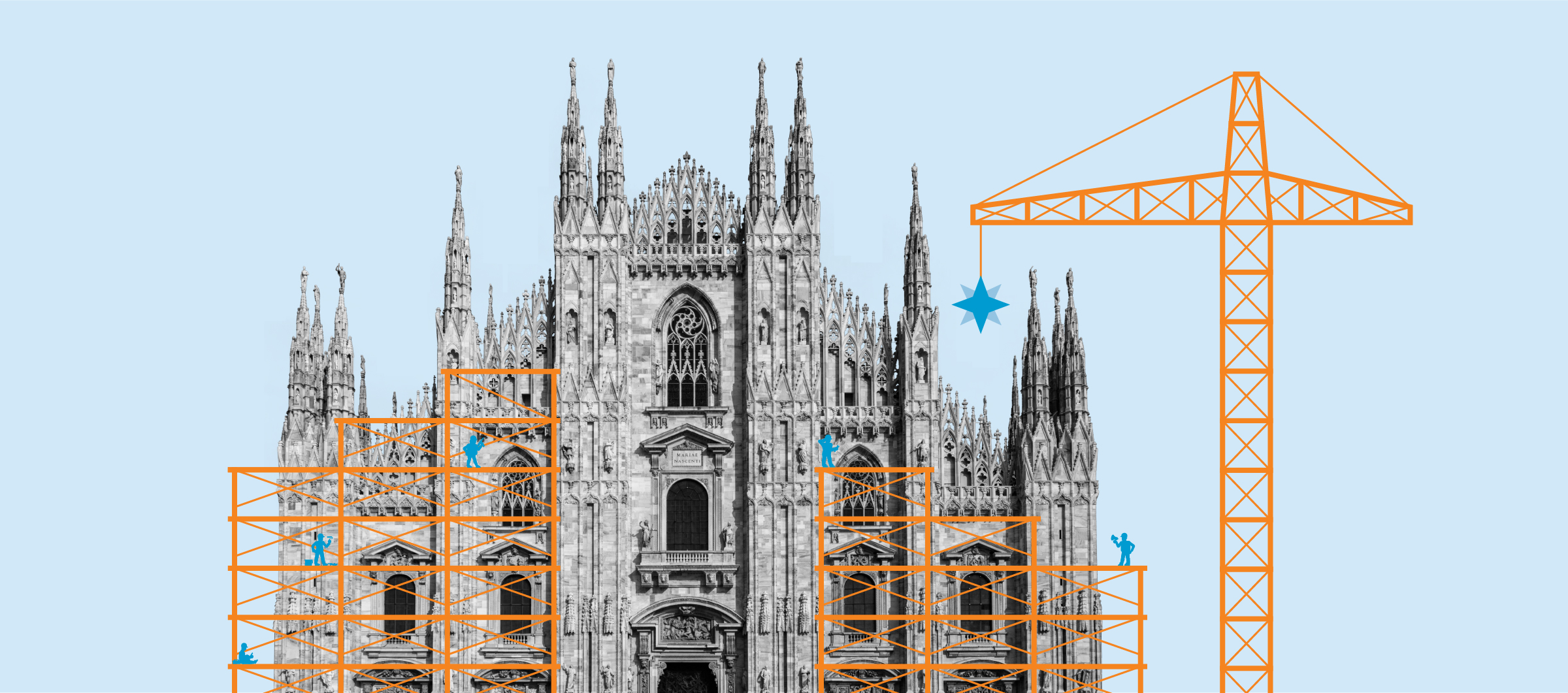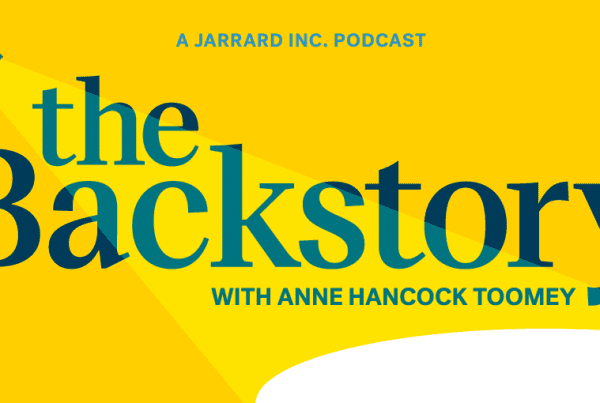Help a Sister Out
3.5-minute read
Healthcare needs cathedral builders.
Today’s leaders are relentlessly whipsawed by regulators, investors, AI disruption, workforce shortages, upstart competitors and whatever-Trump-does-next.
“It’s a period of hyper-uncertainty,” says HBR’s Ideacast. “No matter how much data you gather or logical projections you make, you really don’t know what’s next.”
Build cathedrals in this whirlwind? The dizzying pace of change makes it feel impossible to plan a mere five years out—which also happens to be the average tenure of a healthcare C-suite executive.
But if you’ve been in healthcare long, you’ve heard the stories of Catholic Sisters who insisted (to the point of responsible irritation, sometimes) on bringing a generational perspective into boardrooms.
“We must make these changes to hit the numbers next quarter,” an anxious executive would argue.
“What if instead,” a Sister would counter, “we plan like we were building something your grandchild can rely on when they’re 70? How would that change what we do today?”
The point was never to dismiss quarterly pressures. As the Sisters also reminded us: “No money, no mission.”
But leadership is always a both/and proposition, even when it’s costly.
Today’s must serve something greater than surviving another round of existential whack-a-mole. Instead, today’s efforts must be means to an end.
Here’s the thing about cathedrals. The people who plan them never live to see them finished. They begin work they won’t complete, trusting that others will carry it forward.
Healthcare leadership is a legacy project.
Discounting the Future
Legacy-building is an act of resistance against today’s near-termism pressures…and our own biology.
Behavioral economists call our tendency to devalue rewards and consequences the further they are in the future “temporal discounting.” We’re not good at delayed gratification. It explains why we save too little for retirement, underfund prevention or fail to invest in innovation. We choose the quick payout over the patient reward.
Neuroscience adds another layer. Imagining your future self (or, your future organization) activates the brain’s prefrontal cortex, which is responsible for effortful, abstract thought. Chasing short-term rewards, meanwhile, lights up the limbic system—fast, emotional, and instinctive.
Our brains prefer the quick hit. If you’ve ever bribed a toddler with a cookie, you know this truth. That’s why a budget win this quarter feels more satisfying than an invisible payoff in 2035.
And if you give a mouse a cookie, well, you know what happens.
So, it’s no shock that, when asked, 70 percent of leaders are seen by the public as too focused on short-term financial results, while almost 60 percent are seen as neglecting the long-term impact of today’s decisions.
Lots of cookies given, it seems.
Thinking about the future is not for the faint of heart. It’s not just different work, it’s harder, too. It requires different disciplines, different skills and even a different part of your brain.
How do you activate that? Maybe by asking different questions.
Questions that Create the Future
The words leaders use and the questions they ask define the horizons they pursue. Closed or judgmental questions shrink the conversation. Open, aspirational ones expand it.
If you want your team to think past the quarter – and activate that prefrontal cortex – frame questions that open the future for them. Try these:
- What is the story we want to tell in 10 years about what we did today?
- What will this community’s kindergarteners one day thank us for starting today?
- If we solve this problem now, how can we solve it in a way that makes us stronger next year, too?
- What will the future ask us to stop doing? Why not stop now?
Those don’t erase today’s financial pressures. But they ensure today’s choices are stepping stones, not cul-de-sacs.
In Conversation with Your Future
These questions—and how you answer in your actions—are part of the active and consequential conversation you are having today with your future self.
Thanks to AI, this conversation is not merely a thought experiment. There are new programs that let people age their face—or even chat with an older version of themselves.
What happens when you talk with an older you? Studies show that when people see or interact with their future selves, they save more, study more, invest in their health more and even lower their anxiety.
Why? Because the future suddenly feels real. No longer is tomorrow abstract. A sense of “self-continuity” grounds you to your future. You can feel the consequences of today’s choices.
Have that conversation with yourself and your team. What would your future self say if it plopped itself into the chair next to you? What would your future organization ask you to protect, discard or build?
Choose Your Hard
The Sisters lived in this conversation. They asked cathedral-building questions, and their answers shaped institutions that endure.
You know the motivational meme that’s so popular you can buy prints of it on Etsy for your coffee nook. At Hobby Lobby it’s on aisle six, next to frames of “live, laugh, love.”
“Marriage is hard, divorce is hard. Choose your hard,” it admonishes. “Being in debt is hard, being financially disciplined is hard. Choose your hard. Communication is hard. Not communicating is hard. Choose your hard.”
It’s a locker room sermon from a tough coach; punchy, clear and universally applicable. It’s a homily from future you.
Healthcare leaders must reclaim this practice. Temporal discounting is real. Short-term pressure is unrelenting. But by asking harder questions—open ones, long-horizon ones—you bridge the gap between today’s urgency and tomorrow’s legacy.
Maybe the bridge will look like a cathedral.
Contributors: Tim Stewart and Emme Nelson Baxter
Image Credit: Drew Do and Shannon Threadgill




